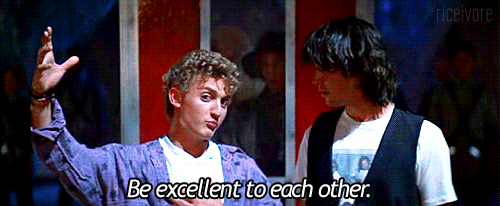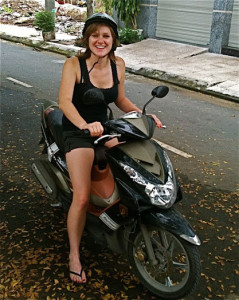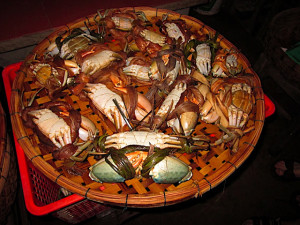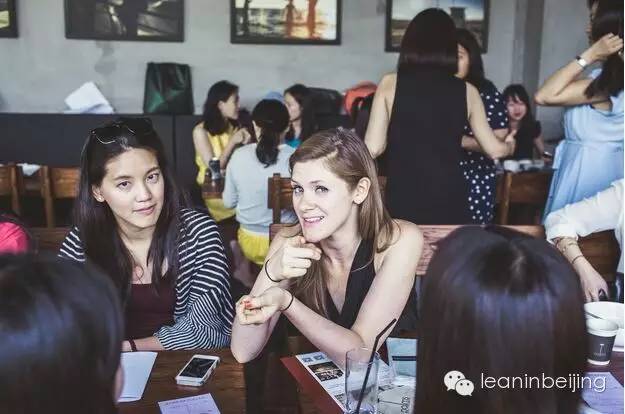The purpose of this post is equal parts education and catharsis. I’m going to talk about what HSD is—and also my journey with it.
HSD is challenging to diagnose, and I benefited greatly from finding information strangers posted on the internet about their experiences with HSD and EDS. If this is something you deal with, I hope this is helpful for you and you know you’re not the only one! If this isn’t something that you deal with, thank you so much for listening to my story!
Fun Fact: The collagen in my body (likely!) acts differently than the collagen in your body.
Fun Fact #2: The reason that is, is because I have something called Hypermobility Spectrum Disorder (HSD), a genetic connective tissue disorder.
Fun Fact #3: HSD is notoriously hard to diagnose—this is something I only figured out this past June, and something I am still learning so much about.
On the surface, it just looks like I’m ridiculously flexible.
What it does mean though is that the ligaments, tendons, and other structures that support my joints stretch more than normal. Basically, I am SO flexible that my joints are poorly supported—and my muscles jump in to help when they’re not supposed to.
This can cause frequent injury, sprain, or joint pain.
Fun Fact #4: Collagen is found all throughout the body! That means for some people with HSD, they can have issues outside of joint and muscle pain, including digestive issues, fatigue, faintness, and issues with—my new favorite word—proprioception. Proprioception is how your body knows where it is in space—meaning people with HSD can seem “clumsy” or stumble around a bit.
HSD is a spectrum disorder—on the high end of that spectrum is Ehlers-Danlos Syndrome (EDS). Are you familiar with “Jessica Out of the Closet”? She’s a popular influencer/YouTuber that talks about her experience with EDS. Check her out; she’s great!
On the lower end of the spectrum, you might be “asymptomatic” but still have some hypermobile tendencies.
I’m on the lower end, somewhere in the middle. Everyone who may have HSD or EDS will have it manifest a little differently. Therefore, my experience will be somewhat different from yours. That being said, I’m learning that HSD symptoms can be as severe as EDS, they just manifest differently.
But hopefully, without sounding too much like a martyr, you’ll indulge me as I tell you how this affected me.
This time last year, I had trouble walking.
In retrospect, this issue has affected me since about 2014, with injuries that refused to heal properly, but started traumatically manifesting in 2019.
In early 2019, I had what I thought was a small procedure to fix a stubbornly unhealing hip issue—and instead of recovering, my entire body seized up, putting me through the worst pain I’d ever experienced. My back spasmed, my hip joints refused to align, and despite my best efforts to get the best care I needed, it felt like I was playing whack-a-mole with a hodge-podge of maladies. Over the course of several months, I dealt with various hip, back, ab, feet, hamstring (you name it!) issues. I couldn’t wear regular shoes—I could only find one special pair of sneakers that wouldn’t put my feet in pain. It was exhausting to get through the day-to-day, and I tried to make sure that it didn’t show too much.
Going 3 blocks to the grocery store was harrowing. On recommendation from a doctor, I started using hiking poles to help me get around. Thankfully, I could still go around my office without using them, but any time outside of the office, I needed to have my poles with me.
I was (wrongfully) so embarrassed to be using these walking aids. What would people think? Would people understand if I needed to sit down on the bus? Would they think that I was trying to take the seat away from others, faking it? The good news is that I had absolutely no reason to be ashamed of using these walking aids. They were so helpful, and so many people of all ages use walking aids to get around. And when I asked to sit down on the bus, people let me, no questions asked.
However, I had no idea what was happening to my body—and neither did any of my very well trained doctors. I went to so many—doctors, physical therapists, chiropractors, and appointments on top of appointments—to try to help me figure this out. They were as stumped as me; one PT called me their “most challenging case.”
What’s great is that I had great friends supporting me. For example, before the hiking poles recommendation, I had my company holiday party coming up—I really wanted to go, but what if I fell? Or needed to sit the entire time? A friend went with me, to make sure I felt comfortable, that we could sit when I wanted to, and that I could lean against him if I needed. When I got injections to help “sure up” some of my weak joints, my friend came over and spent the day with me, in case I needed anything.
But without understanding what was happening to me, and without the right medical providers to help me, I was tired, in pain, and scared.
I now understand that HSD is not well-known and does require special training.
After lots of tears, time, and googling, I figured out that what I had was HSD. Better yet, I found a physical therapist in my neighborhood who not only specialized in hypermobility issues but had a very similar type of HSD as I did (thank you, Yelp!).
Working with her felt like a Godsend. For the first time, it felt like someone was speaking my language. I told her my symptoms, and she immediately understood what I was talking about—and knew how to fix it. She was able to properly diagnose me, and I quickly started to see improvement.
From stumbling around in pain, struggling to walk several blocks, I am now able to bike, hike, surf, and swim. I credit my physical therapist and consistent physical therapy for my turnaround. To note, this is something I will need to manage my entire life. But I now have the tools to do so. I will also credit resolve and tenacity—it unfortunately takes an ample amount of perseverance to navigate our American health care system. Throughout the years, I *knew* the issues I was dealing with were connected. Don’t doubt the little voice in your head. If you think something is off, keep pushing until you find your answer.
Lastly, a good sense of humor is indispensable.
HSD isn’t the end of your world! Far from it; with proper education and management, you can lead a regular life. You just need to really be on top of your physical therapy, and it pays to educate yourself on how it affects your body.
If you or a loved one has HSD, this is what I have found helpful:
- Find a medical provider specializing in hypermobility.
This was instrumental to my own education and physical turnaround. We made small, but significant changes that helped end and manage the pain.
- Stock your bookshelf. These two books are my bibles:
For Mobility: The Roll Model – Hypermoble people are flexible–but that means that traditional stretching can actually be harmful. The Roll Model is a book and collection of therapy balls that help you release tension in your muscles. 100% game-changing.
For Strength: Living Life to the Fullest with Ehlers-Danlos Syndrome: Guide to Living a Better Quality of Life While Having EDS. Working with previous PTs, I would injure myself from seemingly harmless PT exercises. This book provides a system to help you work up to more advanced exercises within the principles of hypermobility and EDS.
Also a benefit of this book, if you CAN’T find a PT that specializes in hypermobility, this book provides guidelines for the PT, to help educate and guide you both through.
Life-long physical therapy is now your new norm. This is what’s in my “Physical Therapy Toolbox:”
- The Roll Model Therapy balls – I recommend just getting the whole starter kit. I most often use the “PLUS” balls the most, but prefer the “Alpha” for my thighs and upper back.
- Short foam roller – I use this every morning.
- Long foam roller – Useful for certain exercises.
- Massage gun – There are 101 massage guns now. Doesn’t have to be fancy, but a good mid-range one should do the trick. While this has been incredibly helpful for me, don’t use this over other tools. This can only do so much. Make sure you still use your therapy balls and foam rollers.
- Resistance bands – Work up to using these.
- Yoga strap
- Yoga block
Resources:
- UWHealth Handout (University of Wisconsin-Madison)
- Understanding Hypermobile Ehlers-Danlos Syndrome & Hypermobility Spectrum Disorder (I really appreciated this book.)
- Hypermobility Syndromes Association (HMSA)
- Wikipedia: Hypermobility spectrum disorder
- Ehlers-Danlos Society
Thank you for listening to my story. I hope something here helped you today.
It’s 2020, so I don’t have to lecture you about being nice to people. If anything, this experience has underscored the wisdom of my favorite sages Bill & Ted, “Be excellent to each other. (And party on, dudes!)”












